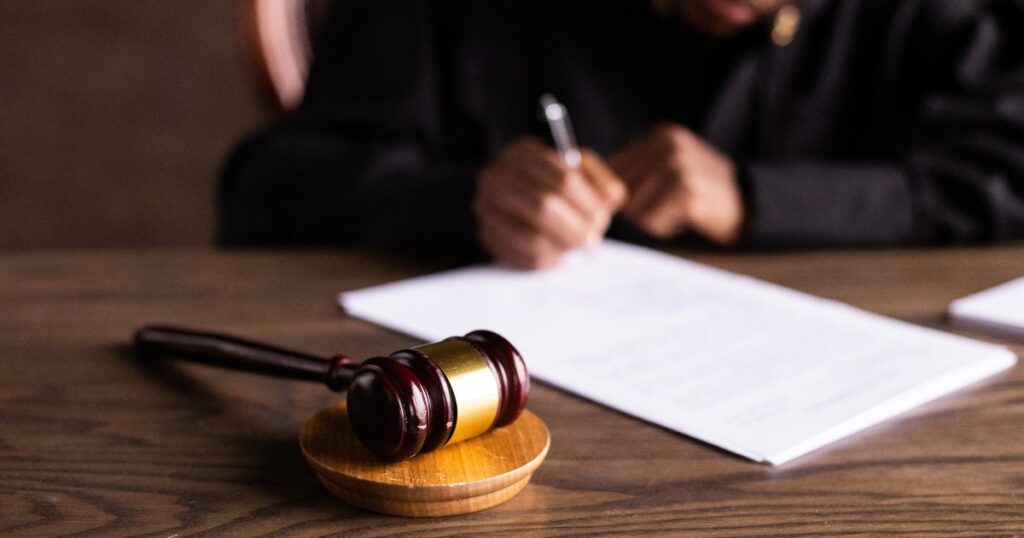When you’re involved in an accident, it’s natural to wonder about your rights, especially if you believe you might be partially at fault. Many people assume that if they share some responsibility for the incident, their chances of receiving compensation are slim to none Cambre & Associates uber accident lawyer
But this isn’t always the case. The law knows that accidents are often complicated, with different factors contributing to the outcome. Even if you bear some of the blame, Ikerd Law Firm helps you understand these subtleties and fights for just compensation.
This article explains how a personal injury lawyer can assist in these cases and what outcomes you might expect.
Understanding Comparative Negligence
Comparative negligence is when more than one person shares some of the blame causing in an accident. The idea behind comparative negligence is to figure out how much money each should pay or receive based on their fault in causing the accident, making things more fair.
Comparative vs Contributory Negligence
Comparative negligence means you can still get compensation if an accident was partly your fault, but the amount you get is less if you’re more to blame. Most states use this, including Louisiana.
Contributory negligence means you will not recover damages for your injuries if you’re even slightly at fault. In other words, if you “contributed” at all to causing the wreck, you cannot recover any damages for your injuries. It’s important to understand these laws because they differ by state. Luckily, there are only four states that use the harsh contributory negligence regime-Virginia, North Carolina, Alabama, and Maryland, plus the District of Columbia.
Proportional Comparative Fault is a hybrid negligence regime used in several States, including Texas. Under this theory, an injured person can only recover if their fault is less than 50%. In other words, if a fact finder determined the injured plaintiff was 50.1% or more at fault for causing the incident that led to their injury, that plaintiff would not be able to recover any damages. Conversely, if they “contributed” 49.9% percent of the fault in causing the accident or injury, the person can recover damages. However, like a pure comparative fault regime, their recovery will be reduced by the percentage of their own fault. Remember, there could be multiple parties partially liable for causing an injury, including third parties that are not part of the lawsuit.
State Laws on Fault
State laws vary a lot in personal injury cases. States with comparative negligence laws are more forgiving, allowing you to receive money even if you share some of the blame.
Partial Fault Examples
Louisiana law uses the “comparative fault” regime in personal injury cases. This means that even if you are partly responsible for an accident, you can still get compensation. However, the amount you receive will be reduced based on how much you were at fault.
How Compensation is Affected by Partial Fault
If you’re partly to blame for an accident, you could receive less compensation due to comparative negligence. This means they figure out your compensation based on your role in the accident, considering medical costs, lost income, and pain.
It’s important to have a lawyer, especially if contributory negligence laws apply, as even being slightly at fault could mean you lose everything. Lawyers are key to fair settlements since insurance companies might try to pin more blame on you to pay less. Having a lawyer from the start helps fight these tactics and protects your finances.
Strategies a Personal Injury Lawyer Uses in Partial Fault Cases
Personal injury lawyers collect proof to show their client is less at fault and talk with insurance companies for fair settlements that reflect both parties’ mistakes, ensuring their clients get a just outcome.
Gathering Evidence
A personal injury lawyer understands that having solid evidence is essential to proving who’s at fault. They gather important stuff like accident scene photos, witness accounts, and medical records. The success of personal injury cases depends on this evidence. To build a compelling case for their clients, attorneys play a critical role in gathering and presenting this evidence.
Negotiating with Insurers
Dealing with insurance companies is tricky, especially if you’re partly blamed for an accident. Personal injury lawyers have tactics to fight these claims and try to reduce how much that blame affects your money. They are skilled in this area and typically provide their clients with better outcomes than if they had attempted to do it themselves.
Building a Strong Case
To make a solid personal injury case, it’s important to gather and examine evidence thoroughly, like looking at accident reports and getting experts’ opinions. A good personal injury lawyer is key in building a strong argument that clearly shows the other party’s fault, ensuring nothing is missed to strengthen their client’s case.
The Importance of Evidence in Proving Fault
In legal cases, especially personal injury ones, it’s essential to have solid evidence like accident photos and medical records. Lawyers are important because they know how to handle this evidence with their law and medical knowledge. Always take photos and note details right after an accident to support your case.
A lawyer helps you gather and safeguard evidence, including critical witness statements, to strengthen your case in court or negotiations.
Consult a Personal Injury Lawyer Today
If you’re somewhat to blame in a personal injury case, it’s not over. Understanding your rights is essential. A good personal injury lawyer can still get you the compensation you are due. They’re great at finding evidence and dealing with insurance companies for you. Even if it’s partly your fault, the right lawyer can help.
Choose one as soon as possible to start your financial and physical rehabilitation and receive the compensation you are entitled to.






